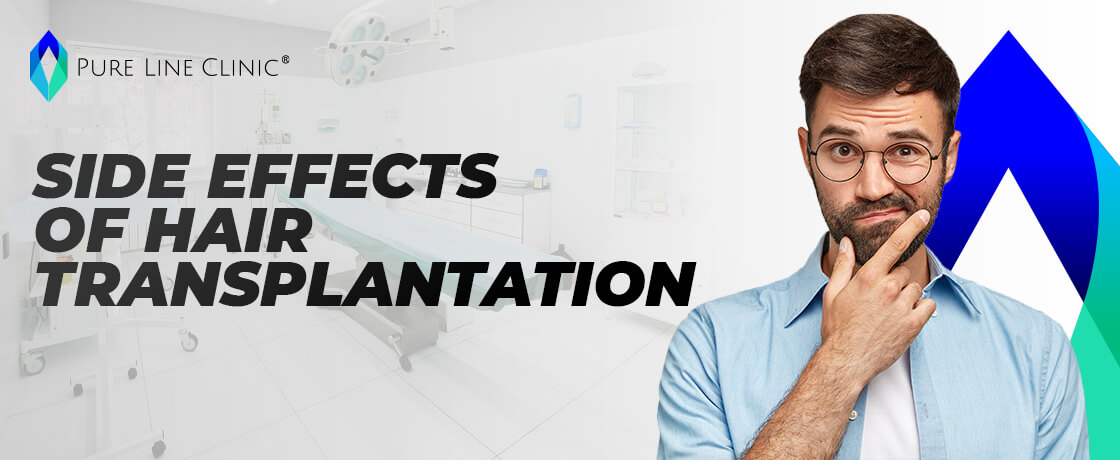
Side Effects of Hair Transplantation: What You Need to Know
Hair transplantation has become a beacon of hope for millions suffering from hair loss around the world. With advancements in technology and techniques, hair transplantation offers a permanent and natural-looking solution. However, as with any surgical procedure, hair transplantation comes with certain risks and side effects. In this article, we explore these side effects in detail for those considering the procedure.
Temporary Swelling and Redness
Post-surgical swelling and redness are common side effects that most patients experience. These symptoms are the body's natural response to the surgical trauma and typically subside within a week. Swelling is usually localized to the forehead and around the eyes, and while it may be uncomfortable, it is generally harmless.
Pain and Discomfort
Pain is another common side effect that patients might experience after hair transplantation. The severity of the pain varies from person to person and can be managed with over-the-counter painkillers or prescribed medication. The discomfort is usually temporary and diminishes as the healing process progresses.
Shock Loss
Shock loss refers to the temporary loss of existing hair in the transplanted area. This can be alarming to patients, but it typically resolves within a few months. The transplanted hair follicles enter a resting phase before they start to grow again, leading to temporary shedding.
Itching
Itching is a common side effect that occurs as the scalp heals. This is due to the formation of scabs around the transplanted follicles. While itching can be irritating, it can be managed by keeping the scalp clean and using prescribed topical solutions. However, it is crucial to avoid scratching, as this can dislodge grafts and affect the final result.
Infection
Although rare, infections can occur if post-operative care instructions are not followed correctly. The risk of infection is minimal when the procedure is performed in a sterile environment by a qualified surgeon. Infections, when they do occur, can typically be treated effectively with antibiotics.
Scarring
Scarring is a potential side effect, particularly with the Follicular Unit Transplantation (FUT) technique, which involves removing a strip of skin from the donor area. While FUT can leave a linear scar, it is usually well-hidden by the surrounding hair. On the other hand, the Follicular Unit Extraction (FUE) technique leaves tiny, round scars that are less noticeable. Patients prone to keloid scarring should discuss this with their surgeon, as they may be at higher risk of noticeable scarring.
Numbness
Numbness in the scalp is a side effect that some patients experience after hair transplantation. This is typically due to nerve damage during the procedure. Numbness is usually temporary and resolves within a few weeks to months as the nerves regenerate. However, in rare cases, numbness can be permanent.
Nerve Pain
Nerve pain, or neuropathic pain, can occur when the nerves in the scalp are irritated or damaged during the procedure. This type of pain can be sharp, shooting, or burning and may persist for several months. Patients experiencing prolonged nerve pain should consult with their doctor for appropriate management.
Unnatural Hair Growth
A successful hair transplant should result in natural-looking hair growth. However, if the angle and direction of the transplanted follicles are not aligned correctly, it can lead to unnatural hair growth patterns. Choosing a skilled and experienced surgeon who understands the nuances of hair direction and density is crucial to avoid this issue.
Overharvesting
Overharvesting occurs when too many follicles are removed from the donor area, leading to thinning or bald spots. This is particularly concerning in patients with limited donor hair. A conservative approach is recommended to ensure that the donor area remains dense and healthy.
Pluggy Appearance
The "pluggy" appearance refers to the unnatural look that occurs when large grafts are used in hair transplantation. This is more common with outdated techniques and can be avoided by using modern methods that involve smaller grafts. To create a more natural look, it is recommended to use grafts containing 1-4 hairs.
Psychological Impact
The psychological impact of hair transplantation should not be underestimated. Patients often have high expectations, and if these are not met, it can lead to disappointment and regret. Pre-operative counseling is crucial to ensure that patients have realistic expectations about the results, including the possibility of needing multiple sessions and the time required for full results to become apparent.
Maintenance of Results
Hair transplantation is not a one-time solution; ongoing maintenance is often required to preserve the results. Patients may need to follow a post-transplant care regimen, which could include medications like finasteride or minoxidil to prevent further hair loss. Regular follow-ups with the surgeon are also essential to monitor progress and address any concerns.
Conclusion
Hair transplantation offers a viable solution for hair loss, but it is not without its side effects. From temporary discomforts like swelling and pain to more permanent issues like scarring and nerve damage, patients must be fully informed of the potential risks. By choosing a qualified surgeon and following post-operative care instructions, many of these side effects can be minimized. Ultimately, understanding the potential side effects allows patients to make informed decisions and set realistic expectations, leading to a more satisfying hair restoration journey.

What is the Microscope Method for Hair Transplant ?
Hair transplants can perform in many different methods. The microscope method means analysing the most productive and healthy hair grafts under a microscope before a hair transplant and planning the operation accordingly.

Is Hair Transplant Painful?
Hair restoration surgery is a surgical treatment. Consequently, you would anticipate some degree of pain during the operation. Nonetheless, the unique Puresoft ® system makes even the most contemporary procedures painless.

Is It Possible to Regrow Hair on Bald Spots?
Have you recently spotted a bald spot on your head? Are you concerned that the spot will develop and cause you to go bald? Do you try to hide it with a typical comb-over? Do you want to know how to recover hair on a bald head?

After a Hair Transplantation Procedure
Patients need to pay attention to many issues to get the best result in the post-hair transplant process.

Acne After Hair Tranplantation Causes,Prevention and Treatment
Discover the causes, prevention, and treatment of acne after hair transplantation in our informative guide. Learn from Pure Line Clinic ® experts about managing post-transplant acne effectively and promoting successful hair growth.

Is Hair Transplant Safe?
In general, a hair transplant is a safe surgery, however like with any surgical process, there is always a tiny risk of: bleeding. infection. a hypersensitivity to the anesthetic.

Can Stress Cause Hair Loss ?
The quick answer is that stress can cause to hair loss. Telogen effluvium, alopecia areata, and trichotillomania are three kinds of hair loss that can be induced (or made worse) by stress. Stress-related hair loss is usually transient, so you

Does Minoxidil Work?
Minoxidil is readily absorbed and begins to operate almost immediately to enhance blood circulation in your scalp and speed up your natural hair growth cycle.

FUE vs FUT, Which is Better Hair Transplant Method ?
FUE Hair Transplant method, which has increased its popularity recently, is the most used hair transplant method in Turkey. Both methods have different advantages.

Does Finasteride Regrow Hair ?
Finasteride can be used to regrow hair and has been found in clinical trials to be useful in enhancing hair growth. According to one study, 66% of males saw an increase in hair growth after taking Finasteride for two years.

African American Hair Transplant
How to get natural hair transplant results for African Americans by addressing unique hair characteristics, the benefits of FUE, and Pure Line Clinic’s specialists who are experts in customized plans to restore density and confidence.

Shock Hair Loss After Hair Transplant
Shock hair loss occurs between the second and eighth weeks after a hair transplant surgery. At the point when your new hair enters a resting stage, the hair is shed.

Ultimate Hair Transplant FAQ Guide
We understand that deciding to undergo hair transplant surgery can be a big decision, and you likely have many questions. That’s why we’ve curated this guide to provide you with answers to the most commonly asked questions about hair transplant surgery.

FUE Hair Transplant Planning and Expectations
Setting realistic expectations is beneficial for all surgeries. Knowing what to expect after FUE hair transplants will be extremely beneficial.

Is Hair Transplant Permanent?
A hair transplant produces clearly long-lasting, permanent outcomes.There are some situations that need attention.